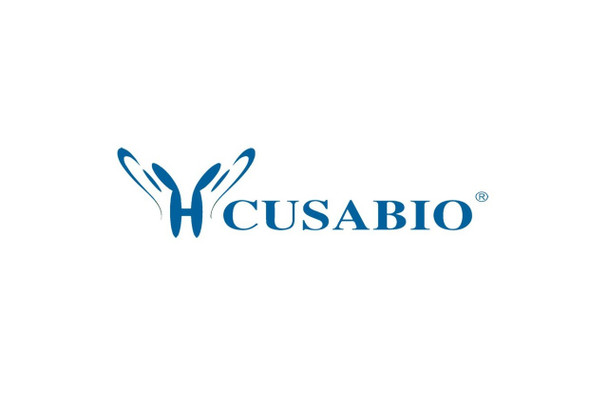Cusabio Human Recombinants
Recombinant Human Tubulinyl-Tyr carboxypeptidase 1 (VASH1) | CSB-EP745337HU
- SKU:
- CSB-EP745337HU
- Availability:
- 3 - 7 Working Days
Description
Recombinant Human Tubulinyl-Tyr carboxypeptidase 1 (VASH1) | CSB-EP745337HU | Cusabio
Alternative Name(s): KIAA1036 (VASH)
Gene Names: VASH1
Research Areas: Cardiovascular
Organism: Homo sapiens (Human)
AA Sequence: MPGGKKVAGGGSSGATPTSAAATAPSGVRRLETSEGTSAQRDEEPEEEGEEDLRDGGVPFFVNRGGLPVDEATWERMWKHVAKIHPDGEKVAQRIRGATDLPKIPIPSVPTFQPSTPVPERLEAVQRYIRELQYNHTGTQFFEIKKSRPLTGLMDLAKEMTKEALPIKCLEAVILGMYPSSPEGEGSGLLWASASCSESEGGVG
Source: E.coli
Tag Info: N-terminal 6xHis-tagged
Expression Region: 1-204aa
Sequence Info: Full Length of Isoform 2
MW: 27.3 kDa
Purity: Greater than 85% as determined by SDS-PAGE.
Relevance: Angiogenesis inhibitor. Inhibits migration, proliferation and network formation by endothelial cells as well as angiogenesis. This inhibitory effect is selective to endothelial cells as it does not affect the migration of smooth muscle cells or fibroblasts. Does not affect the proliferation of cancer cells in vitro, but inhibits tumor growth and tumor angiogenesis. Acts in an autocrine manner. Inhibits artery neointimal formation and macrophage infiltration. Exhibits heparin-binding activity.
Reference: "Prediction of the coding sequences of unidentified human genes. XIV. The complete sequences of 100 new cDNA clones from brain which code for large proteins in vitro." Kikuno R., Nagase T., Ishikawa K., Hirosawa M., Miyajima N., Tanaka A., Kotani H., Nomura N., Ohara O. DNA Res. 6:197-205(1999)
Storage: The shelf life is related to many factors, storage state, buffer ingredients, storage temperature and the stability of the protein itself. Generally, the shelf life of liquid form is 6 months at -20?/-80?. The shelf life of lyophilized form is 12 months at -20?/-80?.
Notes: Repeated freezing and thawing is not recommended. Store working aliquots at 4? for up to one week.
Function: Angiogenesis inhibitor. Inhibits migration, proliferation and network formation by endothelial cells as well as angiogenesis. This inhibitory effect is selective to endothelial cells as it does not affect the migration of smooth muscle cells or fibroblasts. Does not affect the proliferation of cancer cells in vitro, but inhibits tumor growth and tumor angiogenesis. Acts in an autocrine manner. Inhibits artery neointimal formation and macrophage infiltration. Exhibits heparin-binding activity.
Involvement in disease:
Subcellular Location: Secreted
Protein Families: Vasohibin family
Tissue Specificity: Preferentially expressed in endothelial cells. Highly expressed in fetal organs. Expressed in brain and placenta, and at lower level in heart and kidney. Highly detected in microvessels endothelial cells of atherosclerotic lesions.
Paythway:
Form: Liquid or Lyophilized powder
Buffer: If the delivery form is liquid, the default storage buffer is Tris/PBS-based buffer, 5%-50% glycerol. If the delivery form is lyophilized powder, the buffer before lyophilization is Tris/PBS-based buffer, 6% Trehalose, pH 8.0.
Reconstitution: We recommend that this vial be briefly centrifuged prior to opening to bring the contents to the bottom. Please reconstitute protein in deionized sterile water to a concentration of 0.1-1.0 mg/mL.We recommend to add 5-50% of glycerol (final concentration) and aliquot for long-term storage at -20?/-80?. Our default final concentration of glycerol is 50%. Customers could use it as reference.
Uniprot ID: Q7L8A9
HGNC Database Link: HGNC
UniGene Database Link: UniGene
KEGG Database Link: KEGG
STRING Database Link: STRING
OMIM Database Link: OMIM









